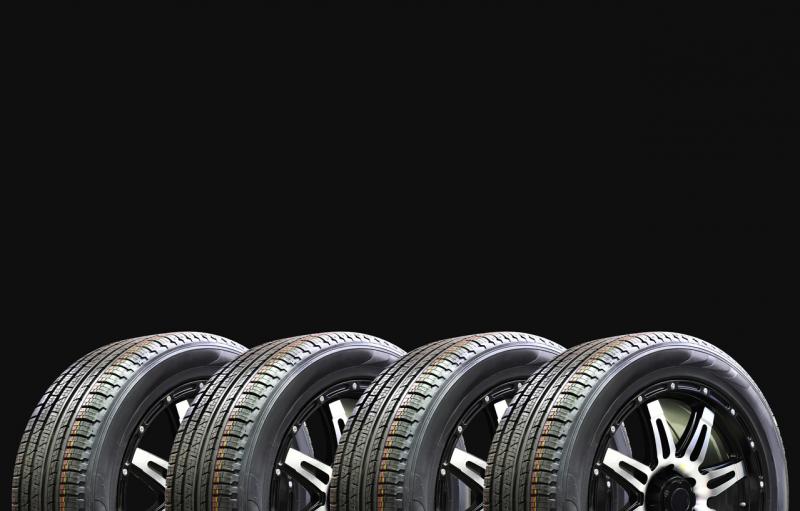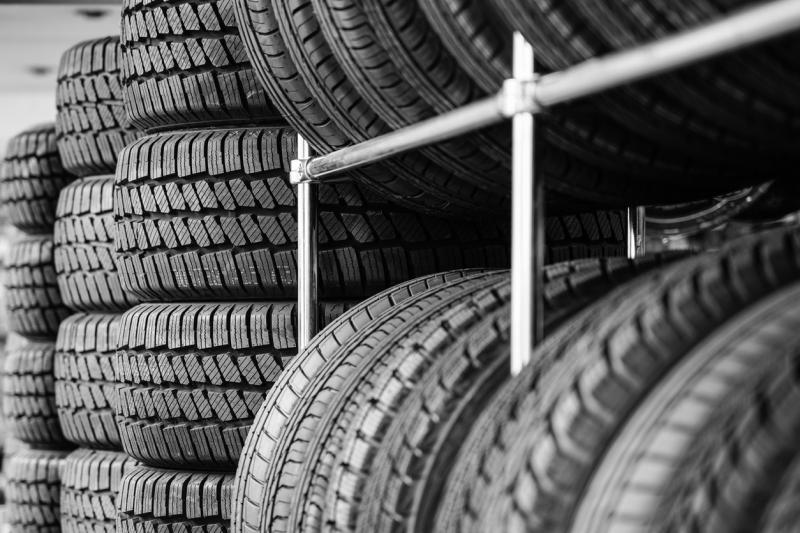How Tires Are Sized

Tire sizing is not something most people consider until they need to replace a flat, blown tire or damaged one. But it certainly helps to understand the sizing coding and process to find the right fit. Below, we look at how tires are sized what their markings mean.
What Tire Sizing Tells You
Tire sizing is not something that varies from one manufacturer to the next. Instead of being internal brand part numbers, these codes used to choose a new tire are standardized. While they sound foreign to us, the codes actually provide a lot of information about your vehicle and what you can expect from that specific tire.
Brand Name
To find the right tire for your vehicle, start with the manufacturer's name. This gives you an immediate reference point for comparison of one of their products to the next, your existing tire brand and other brands available on the market.
Within one brand's realm of offerings, you will find a broad range of types, sizes and styles. At the most basic level, these include:
- Truck
- Car
- Winter
- Summer
- All-season
- Speed rated
You should never drive a vehicle with tire mismatches. All four should be the same for the best performance. You can even cause damage to your powertrain on an all-wheel-drive vehicle like a Subaru if they do not match. The brand name is the easiest starting point to ensure you have a matching set.

Tire Width
Width is a critical aspect of a properly fitted tire. This measurement is taken in millimetres, sometimes preceded by a letter. The first three numeric digits of a tire size code are its width at the widest point, not the tread width. If you prefer high-performance styles, these have a broader width than regular passenger vehicle styles. These high-performance types actually give you more rubber to meet the road.
If there is a P at the beginning of your tire size, this indicates that the model is for a passenger vehicle. An LT signifies a light-duty truck or SUV. Having no letter at the beginning of the sequence can also indicate a passenger vehicle tire. To confuse matters even more, some trucks and SUVs are compliant with P-rated tire types, thanks to automaker design.
Sidewall Height
After tire width comes sidewall height in the coding system. This number is not in millimetres. Instead, it is measure as a percentage of the width in aspect ratio. For example, if you drive a vehicle with a tire that reads 255/55R18, .55 is the sidewall height, read as 55% of the 255mm width. That equation comes to 140mm. But the coding simply shows the percentage for sidewall height.
Many high-performance styles have small sidewalls, commonly called low-profile tires. These smaller measurements improve the ride in performance vehicles. But larger sidewalls provide a more comfortable ride for cars and SUVs. Ride comfort is often lower quality in luxury vehicles, ironically. This happens when they have larger wheels with low-profile tire types.
Tire Construction and Wheel Size
After the above information about the aspect ratio in a tire size code, you can find a letter and a number. The letter indicates tire construction, such as R for radial or B for bias-ply. Radial styles have greater strength and durability, thanks to fabric woven into them perpendicular to the tread direction. Bias-ply models are really outdated, typically only used for vintage vehicles.
After the letting indicating tire construction, you find a number. This number indicates the wheel size on which the tire will fit. This site is provided in inches.
Load Capacity
Following the above sizing is usually a gap and then a set of numbers and letters. These indicate how much weight the tire can bear, also called the load index. These characters are especially important in relation to towing or hauling.
Speed Rating
At the right end of a tire size code is the speed rating. This details the maximum speed at which the tire can function. You should always invest in a tire that matches or exceeds your vehicle's recommended rating, found in your owner's manual.
Speed ratings include:
- L for 75mph
- M for 81 mph
- N for 87 mph
- P for 93 mph
- Q for 99 mph
- R for 106 mph
- S for 112 mph
- T for 118 mph
- U for 124 mph
- H for 130 mph
- V for 149 mph
- W for 168 mph
- Y for 186 mph
Maximum Inflation
On a tire, you can also find the Max Press. This is the maximum inflation pressure that you should never exceed. In fact, you should not use this number as a guide for inflation. Instead, find the right tire pressure in your owner's manual or on the label inside your driver's side door jam.
Treadwear
Today, tire manufacturers also include a Uniform Tire Quality Grading (UTQG) on their products. This label provides quick information, such as treadwear rating, temperature range and tire traction capabilities. Tire treadwear is important because the lower the tread, the less it performs as it should. This degrading performance is particularly true in inclement weather such as rain and snow. Unfortunately, this part of any detail on the tire is not standardized. One manufacturer's system differs from the next.
Temperature and Traction
As in auto racing, tire temperature is an important factor. You can find a letter rating like AA, the best possible temperature rating for a tire. C is the lowest quality for temperature.
Other Key Marks
Beyond all of the above critical coding and information, you can find on a tire, there are multiple other markings. For example, high-performance tires indicate which side of the vehicle they fit and which direction they should turn. A snail-like indicator represents a run-flat tire, one capable of working for a limited period and at a lower speed even after deflated.
More to Read:
Previous Posts:



